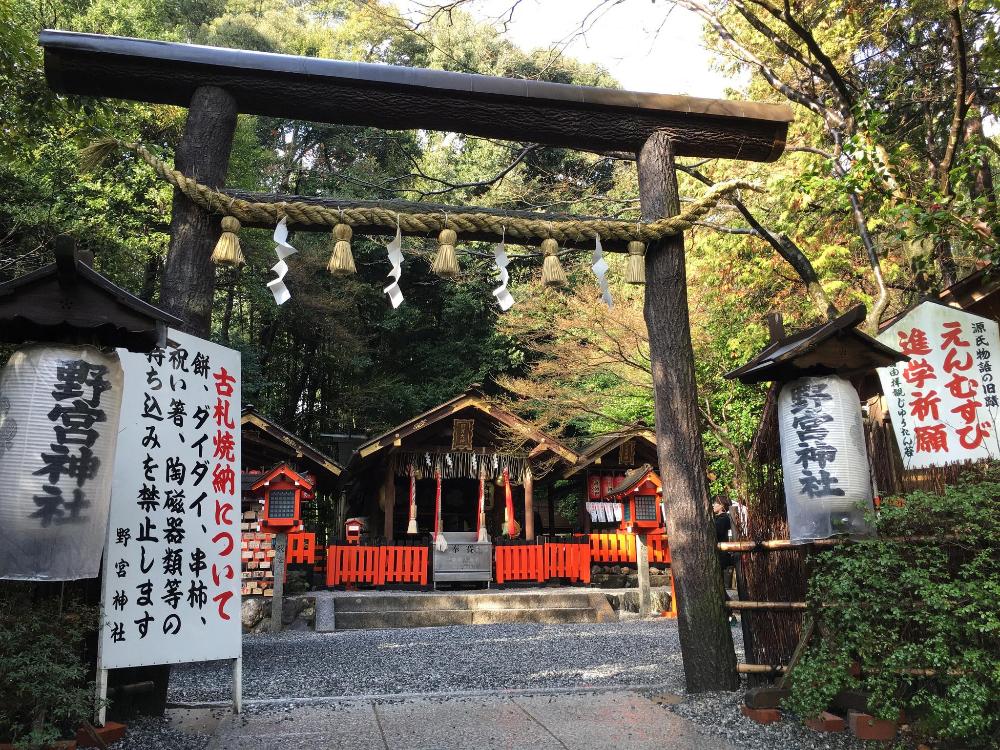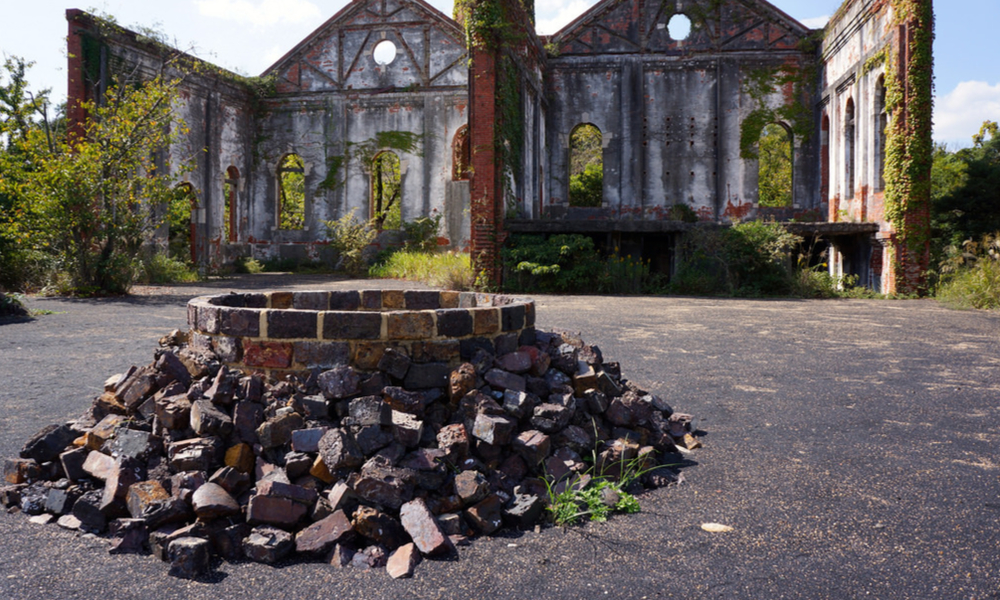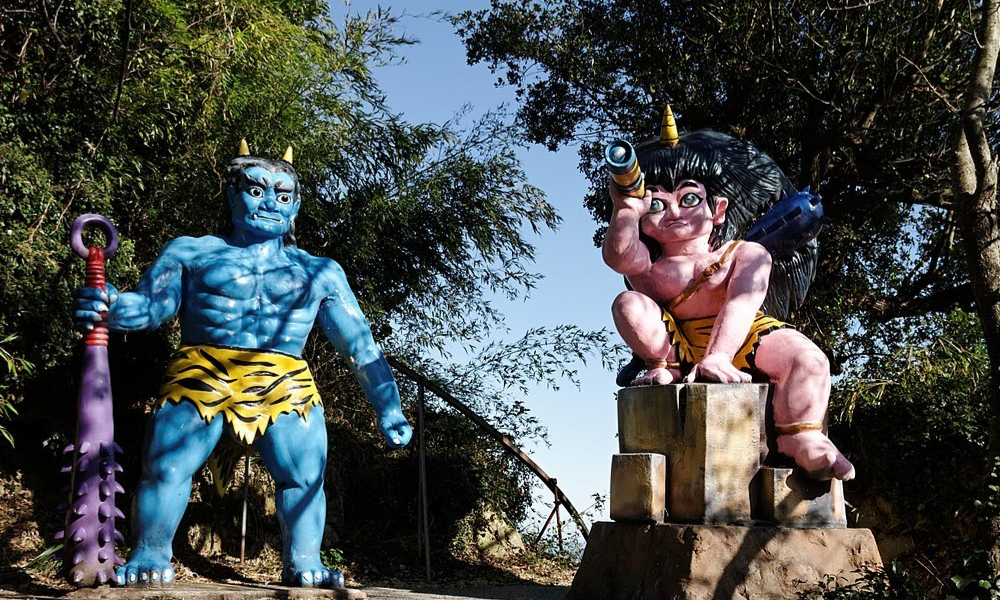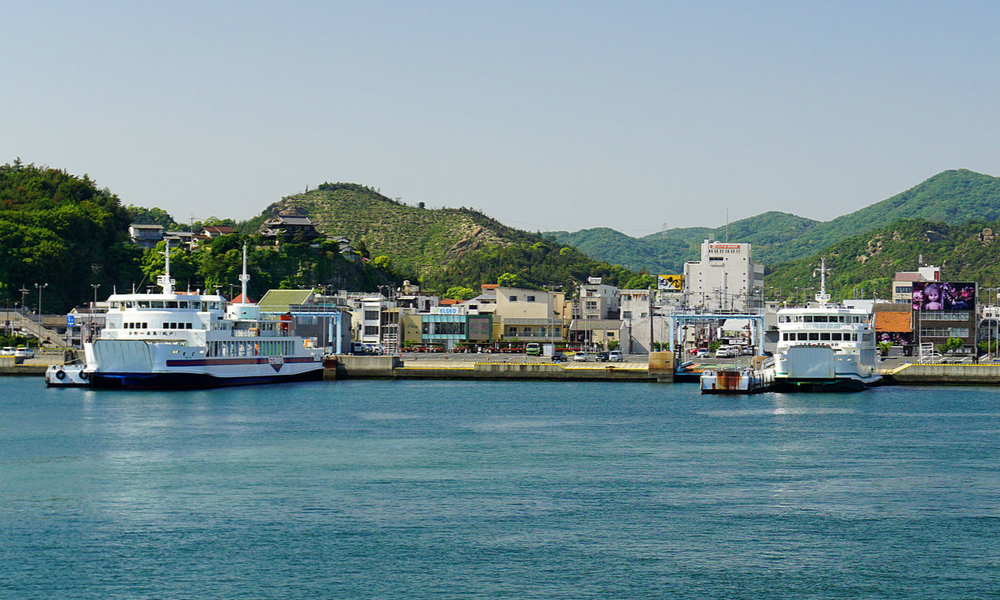
Visiting Arashiyama & Kinkakuji + Tea ceremony (option)
Day Trip
There is a tram named Randen loved by the local people in Kyoto. Taking the Randen and why not visiting the treasure of the Bouddhist cnstruction of 15th and 16th centuries, the Ryoanji temple and the Kinkakuji temple, which are registered as the World Heritage.
The rock garden of the Ryoanji is renown as the master piece of dry landscape, and it is visited by the people from all over the world.
And the most luxury Bouddhist architecture, the Kinkakuji temple shining in gold, would be the place of interest.
After visiting Kinkakuji, you can participate the tea ceremony which is an optional activity. It will be the wonderful opportunity of feeling the spilit of Japanese culture.
★You can find this tour also on TripAdvisor and Viator!
Click here to discover our excursions from Kyoto.
We are Japan specialist travel agency, click here to contact our experts for more information about your next trip.
Overview
There is a tram named Randen loved by the local people in Kyoto. Taking the Randen and why not visiting the treasure of the Bouddhist cnstruction of 15th and 16th centuries, the Ryoanji temple and the Kinkakuji temple, which are registered as the World Heritage.
The rock garden of the Ryoanji is renown as the master piece of dry landscape, and it is visited by the people from all over the world.
And the most luxury Bouddhist architecture, the Kinkakuji temple shining in gold, would be the place of interest.
After visiting Kinkakuji, you can participate the tea ceremony which is an optional activity. It will be the wonderful opportunity of feeling the spilit of Japanese culture.
★You can find this tour also on TripAdvisor and Viator!
Click here to discover our excursions from Kyoto.
We are Japan specialist travel agency, click here to contact our experts for more information about your next trip.
Itinerary ↓↓ The tour will take you to ↓↓
Kyoto station ー Saga Arashiyama: Nonomiya shrine - Path of bamboo - Tenryuji temple(World heritage/ entrance fee included)- Togetsukyo bridge free walk(Arashiyama monky park: 550yen/ additional charges) - Lunch(option possible) … Randen(tram)… Ryoanji temple(World Heritage/ entrance fee included)- Kinkakuji temple(World Heritage/ entrance fee included)ー Option:tea ceremony(45minutes)- End of tour:The tour leader will guide you the bus station of each destination where you wish to go as Kyoto station or commecial district.
★Meeting place: Kyoto station (in the case of private tour, the tour leader will come to your hotel.)
★Meeting time:9:00
★Duration : approx. 8.5hours
★Points of the tour :
- English speaking tour leader
- Small group tour (Private tour is available)
- Visiting 3 temples of World Heritage in Kyoto (entrance fees included)
- Visiting intresting sites in Arashiyama
- Option: Tea ceremony, the ideal place for this experience (near Kinkakuji)
- Arashiyama


Since then, Arashiyama has started to develop as a city of elegance because the aristocracy chose to build their villa and to take stroll in this place.
It has only been a suburb of the capital, but the aristocracy were fascinated by the murmur of the stream of Katsuragawa river from the Hozukyo valley, and richess of the nature of the land. They have chosen this place as the most favorable place for building the temples and to be concentrated in the stillness.
Today, it is one of the best place of Kyoto loved by tourists, where you find many souvenir shops and cafés. It is a wonderful place for having many activities which allow interesting experiences of the culture, and also for finding the beautiful nature of each season and off course, it is a good place for visiting the temples.
-Nonomiya shrine ~ Path of Bamboo


In the entrance of the shrine, there is a black torii gate in the very ancient style and a beautiful mossy garden and the Kameishi (turtle shaped rock). Entering the garden will grant one of your wish.
In the Tale of Genji (literary work from the 9th century), there is a description of this shrine which made it famous as a match-making point.
-Path of bamboo


It is a small charming path of 200m.
The bamboos are very high and they even cover the sky. The sunlights through the bamboos are very beautiful whether if it is a fine or a cloudy day.
Every year in December, the bamboo forest is put in illumination and you can see the fantastic and mysterious beauty at night time.
- Temple Tenryuji(World heritage/entrance fee included)


Back in time when the shogun and the emperor fighted and splitted Japan in two, the shogun built this temple for appeasing the spirit of the emperor when he would win.
Because of consecutive fires, most of the buildings are gone. But for its historic value and its importance, it was classified as World Heritage.
The garden of Soseki Muso, first chief priest and famous architect of gardens as well as the Sogenchi pound where you will see a beautiful nature reflecting are the must-see-spots for your Arashiyama visit.


- Free walk in Arashiyama (Togetsukyo, Arashiyama monky park, Rankyo, etc.)+ Lunch(Option)
In the west side of Kyoto, on the Katsuragawa river, the Togetsukyo bridge is often mentioned in the guidebook as a symbol of Arashiyama.
In Japanese, it is written as "Moon crossing bridge", because of the poem the emperor wrote when he was enjoying boating and saw the full moon crossing the bridge over the starry sky.
This bridge has been built for the first time in 1200 years ago, and it collapsed every time under flood, and restored many times.
The bridge today is a restored version of 1934, and it still perfectly matches with the landscape of Arashiyama.


Iwatayama, Arashiyama monky park(550yen: additional charges)
When you cross over the Togetsukyo bridge, there is a shrine and also the entrance of the park. After the ticket counter, going up the stairs and mountain path for 15-20 minutes, you will find the park on the top of the mountain.
There are around 120 wild monkeys are feeded and you can see them free in the nature. They are tame and do not attack you.
In the resting place, you can buy their food by 100yen, and you can geed them over the net.
As this park is located in the top of the mountain, so that you can enjoy also the amasing panoramic view of Kyoto.


Arashiyama "Yakatabune"(Japanese old fashioned house boat: 1100yen/30minutes:additional charges)
The boating in Arashiyama was an aristocratique hobby since 1200 years. You can enjoy the view from the roofed boat rowed by boatperson.
The natural view of each season of Arashiyama that you see from the boat will be magnificent.
You can charter a boat for 2 persons.


Lunch (self-pay)
As it is the place very appreciated by tourists, there are many restaurants of Japanese authentic local cuisine, but also there are several Yoshoku (occidental cuisine in Japanese style) restaurants.
There are often long queues in front of the restaurants during week-end and in the high season. If you prefer going for a walk instead of making a queue, you can buy some snacks as Dango (Japanese sweets) or croquettes in front of shops of the streets.
We can arrange also booking restaurant for you. Please feel free to contact us for this option.
The choice of the menu, the type of the restaurant and the prices are depending on the season and dates. We can advise you the details.
-Randen tramway(Keifuku chemin de fer électrique, ligne Arashiyama)
You will see 600 pillars of Kyo-Yuzen (the methode of dyeing technique for kimono invented 300 years ago) designed by a worldwide reputated international interior decorater, Yasumichi Morita.
In the night time, the illumination is very fantastic.


The Arashiyama line of Keifuku electric railroad is known by the name as Randen, and this tram is counted as an important element to compose the Kyoto view.
When the automobiles became popular for the private use in 60's, the trams quickly disappeared, but this Randen is still there.
It runs in the east side of Kyoto and it goes to Arashiyama, too. The tram is loved by not only the local people but also by tourists.


- Ryoanji temple(World Heritage)


In the rock garden, there are 15 stones are placed, but the entire composition cannot be seen at once from any angle.
There are no documents about the history and the architect of the garden exist today, and we do not find exactly when it is constucted either.
There is a mystery behind the positions of the stones. There are a lot of people who tried to find out the mystery of the stones, but nobody succeeded.
We ofthen talk only about the garden, but there are also beautiful Fusuma-e (decorative picutre on the surface of fusuma which is a kind of Japanese door inside of the house) and another beautiful gardens, too.
- Kinkakuji temple(World Heritage)


This is a very rare temple of 3 stories high, and the official name of this temple is Rokuonji, but as inside and exterior of the building is doubly or triply coated with gold foil, so that it is called by the name of Kinkakuji (Kin is gold, the gold pavillion.)
It was built in the end of 14th century, and restored many times, but it has been completely destroyed by arson in 1950. The one of today is reconstructed as it has been before originally.
The Japanese famous novelist of modern Japanese literature, Yukio Mishima wrote a novel titled "Kinkakuji" which made the temple more well-known, and it shines more with its legend.
*Tour ended or Tea Ceremony experience (Option: +4000yen/ 45minutes)
If you prefer not to take this option, your one day trip is finished, and we wish you a bon voyage and a safety trip to your country.
From Kinkakuji bus station, you can go to the Kyoto station and to the commecial district (Shijyo kawaramachi) without any transit.
(The tour leader will show you which bus station would be suitable for your destination.)
If you participate in the tea ceremony, we will accompany with you to the bus station.


In general, you learn the carriage and manner in the session, and you will taste the tea that the tea master served for you in a tea ceremony class, but in this class, you can make a tea and you can taste it.
Kyoto is the very central and the leading place for learning tea culture, and this tea class is literally in front of the famous Kinkakuji, this experience will leave you an un forgettable memory.
Where to Go





Itinerary
Itinerary ↓↓ The tour will take you to ↓↓
Kyoto station ー Saga Arashiyama: Nonomiya shrine - Path of bamboo - Tenryuji temple(World heritage/ entrance fee included)- Togetsukyo bridge free walk(Arashiyama monky park: 550yen/ additional charges) - Lunch(option possible) … Randen(tram)… Ryoanji temple(World Heritage/ entrance fee included)- Kinkakuji temple(World Heritage/ entrance fee included)ー Option:tea ceremony(45minutes)- End of tour:The tour leader will guide you the bus station of each destination where you wish to go as Kyoto station or commecial district.
★Meeting place: Kyoto station (in the case of private tour, the tour leader will come to your hotel.)
★Meeting time:9:00
★Duration : approx. 8.5hours
★Points of the tour :
- English speaking tour leader
- Small group tour (Private tour is available)
- Visiting 3 temples of World Heritage in Kyoto (entrance fees included)
- Visiting intresting sites in Arashiyama
- Option: Tea ceremony, the ideal place for this experience (near Kinkakuji)
- Arashiyama


Since then, Arashiyama has started to develop as a city of elegance because the aristocracy chose to build their villa and to take stroll in this place.
It has only been a suburb of the capital, but the aristocracy were fascinated by the murmur of the stream of Katsuragawa river from the Hozukyo valley, and richess of the nature of the land. They have chosen this place as the most favorable place for building the temples and to be concentrated in the stillness.
Today, it is one of the best place of Kyoto loved by tourists, where you find many souvenir shops and cafés. It is a wonderful place for having many activities which allow interesting experiences of the culture, and also for finding the beautiful nature of each season and off course, it is a good place for visiting the temples.
-Nonomiya shrine ~ Path of Bamboo


In the entrance of the shrine, there is a black torii gate in the very ancient style and a beautiful mossy garden and the Kameishi (turtle shaped rock). Entering the garden will grant one of your wish.
In the Tale of Genji (literary work from the 9th century), there is a description of this shrine which made it famous as a match-making point.
-Path of bamboo


It is a small charming path of 200m.
The bamboos are very high and they even cover the sky. The sunlights through the bamboos are very beautiful whether if it is a fine or a cloudy day.
Every year in December, the bamboo forest is put in illumination and you can see the fantastic and mysterious beauty at night time.
- Temple Tenryuji(World heritage/entrance fee included)


Back in time when the shogun and the emperor fighted and splitted Japan in two, the shogun built this temple for appeasing the spirit of the emperor when he would win.
Because of consecutive fires, most of the buildings are gone. But for its historic value and its importance, it was classified as World Heritage.
The garden of Soseki Muso, first chief priest and famous architect of gardens as well as the Sogenchi pound where you will see a beautiful nature reflecting are the must-see-spots for your Arashiyama visit.


- Free walk in Arashiyama (Togetsukyo, Arashiyama monky park, Rankyo, etc.)+ Lunch(Option)
In the west side of Kyoto, on the Katsuragawa river, the Togetsukyo bridge is often mentioned in the guidebook as a symbol of Arashiyama.
In Japanese, it is written as "Moon crossing bridge", because of the poem the emperor wrote when he was enjoying boating and saw the full moon crossing the bridge over the starry sky.
This bridge has been built for the first time in 1200 years ago, and it collapsed every time under flood, and restored many times.
The bridge today is a restored version of 1934, and it still perfectly matches with the landscape of Arashiyama.


Iwatayama, Arashiyama monky park(550yen: additional charges)
When you cross over the Togetsukyo bridge, there is a shrine and also the entrance of the park. After the ticket counter, going up the stairs and mountain path for 15-20 minutes, you will find the park on the top of the mountain.
There are around 120 wild monkeys are feeded and you can see them free in the nature. They are tame and do not attack you.
In the resting place, you can buy their food by 100yen, and you can geed them over the net.
As this park is located in the top of the mountain, so that you can enjoy also the amasing panoramic view of Kyoto.


Arashiyama "Yakatabune"(Japanese old fashioned house boat: 1100yen/30minutes:additional charges)
The boating in Arashiyama was an aristocratique hobby since 1200 years. You can enjoy the view from the roofed boat rowed by boatperson.
The natural view of each season of Arashiyama that you see from the boat will be magnificent.
You can charter a boat for 2 persons.


Lunch (self-pay)
As it is the place very appreciated by tourists, there are many restaurants of Japanese authentic local cuisine, but also there are several Yoshoku (occidental cuisine in Japanese style) restaurants.
There are often long queues in front of the restaurants during week-end and in the high season. If you prefer going for a walk instead of making a queue, you can buy some snacks as Dango (Japanese sweets) or croquettes in front of shops of the streets.
We can arrange also booking restaurant for you. Please feel free to contact us for this option.
The choice of the menu, the type of the restaurant and the prices are depending on the season and dates. We can advise you the details.
-Randen tramway(Keifuku chemin de fer électrique, ligne Arashiyama)
You will see 600 pillars of Kyo-Yuzen (the methode of dyeing technique for kimono invented 300 years ago) designed by a worldwide reputated international interior decorater, Yasumichi Morita.
In the night time, the illumination is very fantastic.


The Arashiyama line of Keifuku electric railroad is known by the name as Randen, and this tram is counted as an important element to compose the Kyoto view.
When the automobiles became popular for the private use in 60's, the trams quickly disappeared, but this Randen is still there.
It runs in the east side of Kyoto and it goes to Arashiyama, too. The tram is loved by not only the local people but also by tourists.


- Ryoanji temple(World Heritage)


In the rock garden, there are 15 stones are placed, but the entire composition cannot be seen at once from any angle.
There are no documents about the history and the architect of the garden exist today, and we do not find exactly when it is constucted either.
There is a mystery behind the positions of the stones. There are a lot of people who tried to find out the mystery of the stones, but nobody succeeded.
We ofthen talk only about the garden, but there are also beautiful Fusuma-e (decorative picutre on the surface of fusuma which is a kind of Japanese door inside of the house) and another beautiful gardens, too.
- Kinkakuji temple(World Heritage)


This is a very rare temple of 3 stories high, and the official name of this temple is Rokuonji, but as inside and exterior of the building is doubly or triply coated with gold foil, so that it is called by the name of Kinkakuji (Kin is gold, the gold pavillion.)
It was built in the end of 14th century, and restored many times, but it has been completely destroyed by arson in 1950. The one of today is reconstructed as it has been before originally.
The Japanese famous novelist of modern Japanese literature, Yukio Mishima wrote a novel titled "Kinkakuji" which made the temple more well-known, and it shines more with its legend.
*Tour ended or Tea Ceremony experience (Option: +4000yen/ 45minutes)
If you prefer not to take this option, your one day trip is finished, and we wish you a bon voyage and a safety trip to your country.
From Kinkakuji bus station, you can go to the Kyoto station and to the commecial district (Shijyo kawaramachi) without any transit.
(The tour leader will show you which bus station would be suitable for your destination.)
If you participate in the tea ceremony, we will accompany with you to the bus station.


In general, you learn the carriage and manner in the session, and you will taste the tea that the tea master served for you in a tea ceremony class, but in this class, you can make a tea and you can taste it.
Kyoto is the very central and the leading place for learning tea culture, and this tea class is literally in front of the famous Kinkakuji, this experience will leave you an un forgettable memory.
| Important to know |
|
| Additional informations |
|
| Included |
|
| Not included |
|


 Seto Inland Sea
Seto Inland Sea East area
East area Naoshima
Naoshima Shodoshima
Shodoshima Teshima
Teshima Inujima
Inujima Megijima
Megijima Ogijima
Ogijima Honjima
Honjima Awashima
Awashima Takamishima
Takamishima Shishijima
Shishijima Ushimado
Ushimado Manabeshima
Manabeshima Takamatsu
Takamatsu Ieshima
Ieshima Kobe
Kobe Uno
Uno West area
West area Miyajima
Miyajima Hiroshima
Hiroshima Around Shimanami Kaido
Around Shimanami Kaido Onomichi
Onomichi Okunojima
Okunojima Omishima
Omishima Osakishimojima
Osakishimojima Ikuchijima
Ikuchijima Bareboat Charter
Bareboat Charter Crewed Charter
Crewed Charter Sailing Boat
Sailing Boat Cabin charter
Cabin charter  Yacht charter
Yacht charter Motor Boat
Motor Boat Our Fleet
Our Fleet Suggested Cruises
Suggested Cruises ¥399,000〜
¥399,000〜 ¥379,000〜
¥379,000〜 ¥399,000〜
¥399,000〜